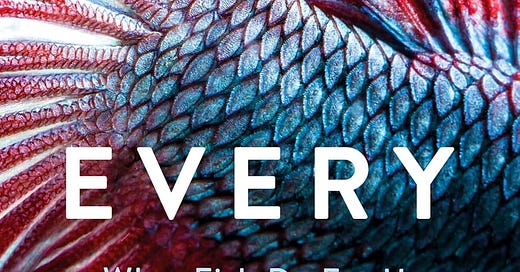Time rolls on and suddenly it is six weeks since I last wrote. I blame head meds. I have been taking sertraline, an SSRI (selective serotonin reuptake inhibitors) for years now. I don’t like the nutty vivid dreams nor the fact that I never wake up rested, but I do like the — mostly — absence of black black days. But my brother, who had also taken sertraline, was advised to switch to duloxetine, a serotonin-norepinephrine reuptake inhibitor (SNRI) and he much preferred it. Then in a GP appointment, my GP advised me too to switch, though to treat stress incontinence. Yes, anti-depressants are the first-line treatment for stress incontinence. Amazing. I asked the GP what the mechanism of this could possibly be but although he was young and keen, he had no idea. It just is. So I switched to duloxetine. I use the word “switch” because you can just take sertraline one day and start taking duloxetine the next. So I did. At first it seemed fine. A few spacey moments, some tiredness, the usual frustration that I’m still taking this stuff. But otherwise OK. Until a week in when I suddenly realised, I am terrified. Actually terrified. My anxiety was immense and it did not abate for weeks. I’ve never known anything like it. I have friends with severe anxiety and I’ve never understood them before now. It is horrible. To be scared of nothing, constantly. I’ve reduced the dose, without GP advice because although I was advised to get a review appointment in a month, it turns out I should have made that appointment the same day I was advised that. A month review is now a three-month review, and I am on my own. The anxiety is a bit better. The book is through its copy-edits. And here are the lovely cover designs.
First, Granta’s:
That is a Siamese fighting fish. I had to ask too.
And then, the American one from WW Norton.
I don’t know why one image is huge and the other isn’t. But you can see the difference. And it is the difference that I love. Publishers kindly ask the author’s opinion on jackets. For the Siamese fighting fish, I had nothing to say beyond, “it’s beautiful.” For the American one, I said, “It’s beautiful. But can there be a fish somewhere?” So there will be a fish somewhere.
There are also now publisher pages about my book that is not yet in proof form. For a book to become real after so, so long is both exciting and petrifying. Here is Granta’s version, though on Amazon, and here is Norton.
Given the last few years and particularly the last year, I think it is a bloody miracle I wrote a word, and I thank all editors, cheerleaders, publishing teams, therapists and friends and family for helping me. I know who I don’t thank but I didn’t put that in my acknowledgments though I was tempted.
Animal hero of the week : Seizure Dog
At the weekend, I saw a friend of a friend have an epileptic seizure. It was shocking, and I felt awful for her, not just for the terrifying blankness that preceded her seizure (this is called a temporary absence), or that she fell (she was surrounded by people), or the jerking movements, the blueness of her skin (this is a tonic-clonic seizure), but for how debilitated she was afterwards. She couldn’t get up although she was lying on cold concrete and it was dark. I was with her small children and they were remarkably fine about it, as was her husband when he arrived: she just needs 20 minutes, he said, and she did. Mummy does this, said her six year old daughter. She’s very tired afterwards but she’s OK. But what an awful blow to the body, and to suffer that repeatedly. Horrible. Things I have since learned about epilepsy: it is the most common neurological condition in the UK, and 30 percent of the half million people who have it are resistant to medication. A thousand die each year of a seizure.
So this week’s hero is the Seizure Dog. It’s not one dog in particular but any dog who is trained to help a person with epilepsy. From the Epilepsy Foundation:
Is "seizure dog" the official name?
It is the name that is most often used. Some people distinguish between dogs that respond to someone who is having a seizure (seizure response dog) and dogs that appear to know when a seizure is going to occur (seizure predicting dog).
Seizure Response Dog: This type of dog is trained to perform specific behaviors during or after a seizure. This might include barking to alert family members when someone is having a seizure or activating a call system. Other dogs may learn to lie next to the person having a seizure to comfort or protect them.
Seizure Predicting Dog: This type of dog may demonstrate specific behaviors before a seizure. These behaviors may imply that a seizure alert dog can anticipate a person’s seizures. While it is true that some dogs seem to be able to sense their owner’s seizures before they start, this is rare and more research is needed to understand and verify what is happening.
In the UK, epilepsy seizure alert dogs (not quite as catchy) are trained to provide a reliable warning up to one hour before a seizure. What? Do they smell it? There is no information on Support Dogs about how dogs manage their 100% successful alert nor what cues they are using. This article from Psychology Today is fascinating. A team from Queen’s University in Belfast thought that dogs were perhaps responding to the release of volatile organic chemicals in a person’s sweat or breath when they were going to have a seizure, due to increased metabolic stress. The team tested dogs from a local dog training club, along with their owners, who did not have epilepsy and gave the dogs scent samples impregnated with “seizure-related odours.” They were then looking for the dogs to demonstrate “attention-seeking behaviours,” but the kind of attention you need when you think your owner is about to die. These were “closely hovering around the owner, intense staring, and climbing up or pawing the owner.”
The dogs, who had not been trained in seizure alert, responded to the seizure odours, and the scientists wrote in scientific language the equivalent of a massive excited fist-bump:
The existence of pre-seizure odor(s) is an important finding because it offers a simple and reliable means for training dependable seizure-alert dogs to warn people of an impending epileptic event, an aim which has long been sought.
So damn cool.
But you want human and dog impact stories, don’t you?
OK. Here are Lynne, Dougie and Simba. Here are Brogan — who was having 17 seizures a day — and Wadsley. These stories give you an idea of what life has to be when you have no idea when a seizure will come. “It’s not the seizure itself,” said my friend’s friend’s husband. “It’s the falls.” With epilepsy you have to be scared of cooking, crossing the road, bathing, anything. Unless you have a Seizure Dog.
This is a film of Brogan and Wadsley. No, YOU are crying over your keyboard.
You can donate to Support Dogs here. Oh, and if you see someone having a seizure, don’t stick your fingers in their mouth. Make sure they are safe, and when the seizure is over (for the tonic-clonic kind) put them in the recovery position. And let them rest. If a seizure seems excessively long (the usual example given is five minutes or longer), then call the ambulance.
Book corner
In “I do sometimes do some work” news, I reviewed a very very good book about smell. You should read it, even though it doesn’t have seizure alert dogs in it.
This is the bit where I politely urge you with Yorkshire grit to a) subscribe or b) upgrade to a paid subscription or c) click on the like button so I know you’ve read and maybe liked this.







Really looking forward to read "Every last fish" !
Rose! So good to find you on here. And with a new book under your arm too. Hurrah! Much look forward to reading it... PGJ x